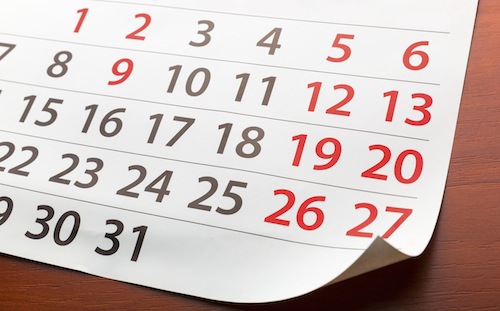So, your organisation has decided to establish a blog and develop a content marketing strategy. Great news!
But if you don’t have the luxury of outsourcing to a content marketing agency, how do you stay on top of creating regular blog posts, social media updates, e-newsletters, e-books, plus more? Who is responsible for what? What content will you publish, when, and where?
Rather than becoming overwhelmed, one of the key strategies to put in place is the creation of an editorial or content marketing calendar. You can create a content calendar very simply in an Excel spreadsheet, or using WordPress or other specialised software. The calendar provides the opportunity to visualise how, when and where your content will be distributed throughout the year. If it’s kept up to date, your content editor or team manager can see at a glance, where things are at.
A content calendar is a key planning tool
As a result, you can plan posts around key industry dates or public holidays, see where there are gaps, make sure you cover a variety of topics, and ultimately ensure content can be sourced well in advance of your scheduled blog/social media posting day, so that your team isn’t scrounging around for ideas on the morning of publication!
You might plan your content on a weekly, monthly or quarterly basis, depending on your industry trends. It’s important to allow a level of flexibility so that you can react and respond to big news stories or events that may arise unexpectedly.
What to include
There are no hard rules about what you should include in your content marketing calendar.
Some organisations might choose to create an all-encompassing calendar that covers everything from media releases to e-books to social media to blogs. However, it is also perfectly fine to create a calendar that only focuses on one particular platform.
Furthermore, within your calendar you might feature a highly detailed outline of the content to be produced so that your content writers have a clear guide of how to approach a topic. Alternatively, you might just throw together your thoughts which can be fleshed out closer to the scheduled date by yourself or another member of your team.
Content calendar layout
There are various options for how to set up your content marketing calendar, and there’s no need to complicate the process. It’s all about mapping things out to suit your particular needs – and it doesn’t have to look pretty either!
If you are creating an all-encompassing content calendar, you might wish to include the following headings:
- Due date – The date the content is due from the content writer.
- Author/person responsible – Who will be writing the blog? You, a member of your team, or an external content writer?
- Platform – Is it a blog, social media post, or e-newsletter?
- Post category/theme – What will be the main theme? I.e. tools, events, industry trends?
- Keyword phrase and topic concept – Which topic are you going to talk about? What are the relevant keyword phrases?
- Topic notes and links – What are the key points that you are going to discuss? Which online articles or other blog posts will you provide links to?
- Comments – Do you have anything else to highlight?
- Status – Is the content in progress, complete, or awaiting approvals?
- Publish date – The date the content will go live.
If you are creating a simpler calendar that focuses on one platform, such as your blog, the headings you might use are:
- Author/person responsible – Who will be writing the blog? You, a member of your team, or external content writing services?
- Topic – What will you be writing about?
- Call to action – What steps do you want your reader to take after reading the blog? Contact your team? Or subscribe to your e-newsletter or e-book?
- 2-3 keywords – Which keywords are you using? Which pages (internal and/or external) will they be linked to?
- Category – Are you providing advice, company updates, sharing information from a recent report, or something else?
- Tags – Which words will you be tagging to help the blog appear in web searches?
- Status – Is the content in progress, complete, or awaiting approvals?
- Publish date – The date the content will go live.
These headings are only a guideline and can be adapted to suit your organisation’s needs. But it’s a great start!
If you need any further advice on creating a content marketing calendar or you need more comprehensive help with choosing topics or your overall content strategy, feel free to contact us.
Leonie Seysan is the Director of Article Writers Australia, and manages the team of professional writers and editors. She holds a Bachelor of Communications Degree (Media Studies) and has been writing professionally for over 15 years. Leonie is also the podcast host of "Content with Humans" and author of "Turning Insight to Influence: A Guide to Building a Thought Leadership Program".






